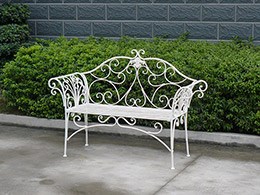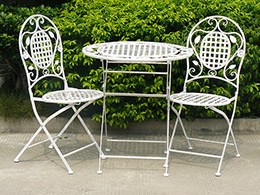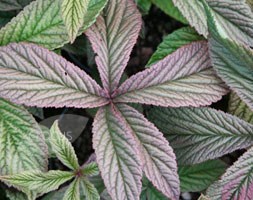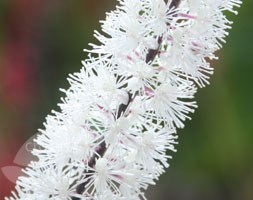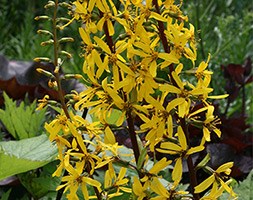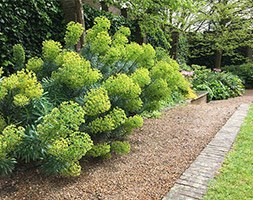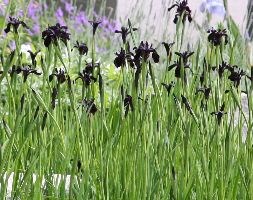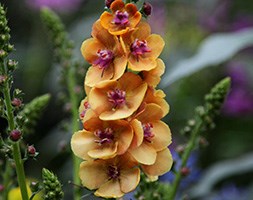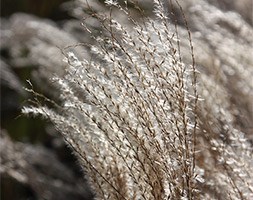New products at Crocus
by Sarah - June 4th, 2015.Filed under: Crocus, New Products.
New items at Crocus
Chelsea bench £149.99
This bench is a delicate design that will really enhance a sunny spot in the garden. Made from powder coated iron, this bench is waterproof which prevents rusting. An added advantage to this bench is that cleaning it couldn’t be easier, but wipe down with some soapy water and it will look as good as new. Measurements: 136cm x 46cm x 96cm
Chelsea bistro set £149.99
This Chelsea bistro set is ideal for afternoon tea in the garden. Supplied in an antique white, this furniture will suit any garden style. Made from powder coated iron, this set is waterproof which prevents rusting. An added advantage to this set is that cleaning it couldn’t be easier, but wipe down with some soapy water and it will look as good as new. Measurements: Table: 70cm x 75cm Chair: 39.5cm x 94cm
Rodgersia pinnata ‘Chocolate Wing’ (rodgersia) £9.99
Position: full sun or partial shade Soil: humus-rich, moist soil Rate of growth: slow-to-establish Flowering period: June and August Flower colour: pinky-red Other features: attractive pink-tinted seed-head Hardiness: fully hardy A big, bold perennial that will really add colour to the border. The leaves emerge in spring a rich chocolate colour, then turn to a greeny-bronze through the summer, before finally changing to chocolate and green in the autumn. Its clusters of tiny flowers appear in summer and also change colour as they mature from pale blush to rich burgundy. To get the best leaf colour you should grow it in a moist, sunny spot, but it is tolerant of some shade. Garden care: Add lots of well-rotted leaf mould when planting. Protect the young foliage against slug damage using beer traps or environmentally friendly slug pellets. Lift and divide congested colonies in early spring.
Actaea simplex ‘Atropurpurea Group’ (bugbane (syn. Cimicifuga)) £8.99
Position: partial shade Soil: moist, fertile, humus-rich soil Rate of growth: average Flowering period: September and October Flower colour: pale pinkish-white Hardiness: fully hardy A dramatic, stately perennial, this produces slender, bottlebrush-like, pale pinkish-white flowers in September and October above clumps of three-lobed, brownish-purple leaves. Its a useful plant, both because it comes into its own late in the season, when many flowers have finished, and because it thrives in damp shade. Try it at the back of a border, between evergreens. Avoid removing the faded flowerheads since they provide an interesting silhouette in the winter garden. In a recent article in the The Daily Telegraph, Dr James Compton – the man responsible for their classification – thought this plant needed atmospheric moisture to thrive. Think of trillium country, he said. On the acid side of neutral, light and leaf-mouldy but able to retain moisture. Garden care: Support using ring stakes well before the flowers appear. Lift and divide congested colonies in late autumn or early spring.
Ligularia ‘The Rocket’ (Ligularia Britt-Marie Crawford) £8.99
Position: full sun Soil: fertile, deep, moist soil Rate of Growth: average to fast Flowering period: July to August Flowers: yellow Hardiness: fully hardy Slender spikes of brilliant yellow flowers on dramatic, black stems zoom above large, handsome, boldly toothed leaves in July and August. This towering deciduous perennial makes a striking specimen plant for a moist, sunny border or bog garden. Or try it beside water, and make sure it has protection from th e strong, midday sun. Garden care: Protect the young shoots from slug damage using beer traps or environmentally -friendly slug pellets. The plant must be kept moist; line the plant hole with plastic, making a couple of holes in the plastic for drainage. Water regularly during periods of drought. Lift and divide large clumps in spring or after flowering. Apply a generous 5-7cm mulch of well-rotted manure or garden compost in spring.
Euphorbia characias subsp. wulfenii (spurge) £7.99
Position: full sun Soil: light, well-drained garden soil Rate of growth: fast growing Flowering period: March to May Hardiness: fully hardy This handsome euphorbia has upright stems clothed with whorls of fleshy, glaucou s leaves and topped with huge heads of chartreuse-green flowers with bronze ‘eye s’ from March to May. The Edwardian garden designer Gertrude Jekyll described this sun-loving, evergreen shrub as ‘one of the grandest of plants’. Euphorbia characias originates from the Mediterranean, where it is found on dry rocky slo pes and scrubland, so it is very tolerant of drought once it becomes established . It forms a natural rounded shape, and brings structure and an architectural q uality to the garden. A tall mainstay of the traditional herbaceous border, it’ s equally at home in a contemporary minimalist or gravel garden. It may self-se ed, but plants rarely come true from seed. Garden care: Each stem is biennial, so will produce leaves in its first year and flower in its second. Once the stem has produced a flower it should be cut right back to its base, or to a point where there is new growth emerging, in midsummer. This will make way for lots of new, fresh shoots. When working with spurges always wear gloves since the milky sap is poisonous and a potential skin irritant. Remove seedlings as they appear.
Iris chrysographes ‘black-flowered’ (gold-marked iris) £7.99
Position: full sun or partial shade Soil: well-drained, moderately fertile soil Rate of growth: average Flowering period: May and June Other features: all parts of the plant may cause severe discomfort if ingested Hardiness: fully hardy Stunning, deep purple, velvety flowers with gold streaks on the falls appear from June above strappy, grey-green leaves. This clump-forming , beardless iris, related to the moisture-loving Siberian iris, makes an eyecatc hing feature in a boggy area of the garden, or beside water. Garden care: Incorporate plenty of well-rotted garden compost or manure into the planting hole. Do not allow the plant to dry out.
Verbascum ‘Clementine’ (mullein) £7.99
Position: full sun Soil: poor, well-drained, alkaline soil Rate of growth: average Flowering period: July to September Hardiness: fully hardy (but short-lived) Bred and selected by the National Collection holders of Verbascum, Vic Johnstone and Claire Wilson, ‘Clementine’ was first launched at the Hampton Court Flower Show in 2003. It is an elegant and architectural plant, which is said to be more reliably perennial than many of the other Verbascums. The brightly coloured flowers are held on well branching stems, and it makes a great addition to a mixed or herbaceous border. It will perform best in well-drained neutral or alkaline soil in sun or dappled shade. Garden care: Cut old flowering stems to ground level throughout the season to promote further flushes of flowers. Cut off dead or dying foliage from basal rosettes to allow good air circulation. Regularly pick off mullein moth caterpillars from the foliage to prevent very holey foliage!
Miscanthus sinensis ‘Kleine Fontäne’ (silver grass) £7.99
Position: full sun Soil: fertile, moist, well drained or sandy Rate of Growth: average Flowering period: August and September Hardiness: fully hardy A stunning, fountainous grass for a mixed or herbaceous border, this has narrow, silvery leaves with a white stripe down the centre. It flowers profusely and keeps on flowering right into autumn, when its new, reddish-brown, tassel-like flowers are a pretty foil for the faded, silvery older ones. Use it to add height to a perennial border, and to give winter presence. Garden care: Protect from excessive winter wet. Cut down to the ground in late winter, before new foliage appears.







